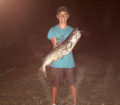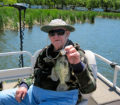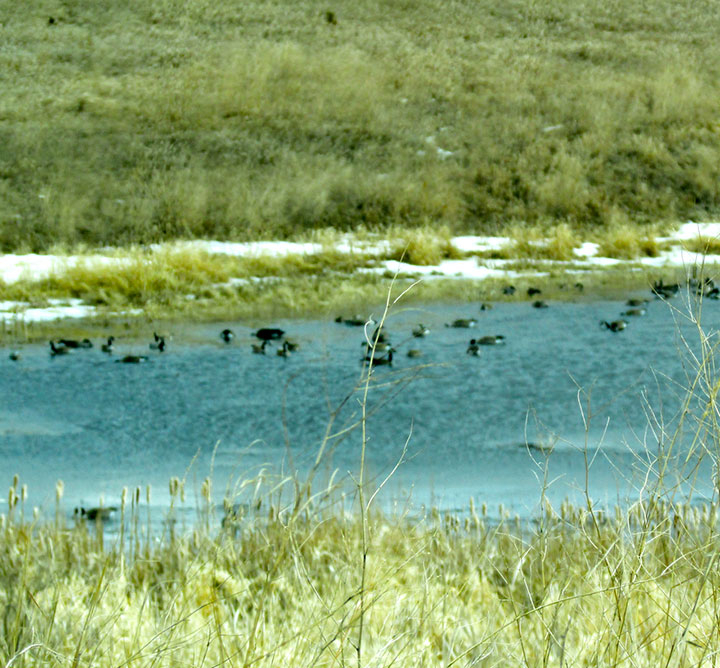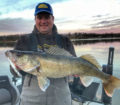By Jim Cunningham
Editor’s note: The author teams up with Jason Mitchell, who hosts the popular outdoor program Jason Mitchell Outdoors, which airs on Fox Sports North (9:00 am Sunday) and Fox Sports Midwest (9:30 am Saturday). Mitchel spent many years as a waterfowl guide near Devils Lake, ND and also hosts Passion for the Hunt. More information can be found online at www.jasonmitchelloutdoors.com.
Waterfowl hunting continues to evolve as decoys become more realistic each season. While the waterfowl hunting experience of decoying birds may be thousands of years old dating back to the beginnings of man, the escalation of movement, realism and concealment options continue to redefine decoy hunting for ducks and geese.
While equipment can greatly enhance the odds, the gear doesn’t necessarily define the hunt. Most ardent waterfowl hunters will agree that the right equipment combined with the right knowledge and experience gained in the marsh or field is the ultimate formula for success.
Perhaps nothing has changed field duck hunting like spinning wing decoys over the last 15 years. Spinning wing decoys like the Lucky Duck HD continue to become more durable with better recharging systems and remotes that allow hunters to synchronize several decoys on one remote system. No more D batteries or wings that won’t last an entire season. With that being said, in the eyes of ducks… all spinning wing decoys are equal if the wings are spinning fast enough to blur.
In the eyes of duck hunters however, having a spinning wing decoy that is both functional and rugged tops the list of importance. Lucky Duck Decoy Co. continues to raise the bar with motion decoys for duck hunters and introduced the Lucky Duck HD last season. Hunters loved the simple remote system and rugged magnetic wings on the Lucky Duck HD. Every feature from the bungee system on the base to the wing magnets seemed to be thought out by avid duck hunters who had a wish list.
Passion for the Hunt TV host Jason Mitchell spent many years as a waterfowl guide near Devils Lake. Mitchell ads a few more tricks for using spinning wing decoys when field hunting. “I like to keep the stakes short so that the spinners are low to the ground mixed in with the field decoys just so you still get the good visibility but also don’t let the ducks get as good of a look at the spinner. On cloudy days, stretch some women’s nylons over the wings to subdue the flash.”
Spinning wing decoys can be critical for field hunting ducks at early light and are an important tool for so many duck hunters but… spinning wing decoys can also completely turn off conditioned or stale ducks. As a general rule of thumb, hunters have better success with spinning wing decoys across the top half of the flyways.
More hunters across the bottom half of the flyway are starting to appreciate motion decoys however. Ducks might be stale to spinning wing decoys by the time they reach Arkansas or Louisiana but some other motion decoys can still be incredibly effective particularly over water spreads.
Motion over water is nothing new as hunters have used jerk cords to add some movement to decoy spreads for decades. There are some limitations however to jerk cords as you have to run a string from the blind to the decoy spread.
According to Ricky Hart of Lucky Duck Decoy Company and a regular on the Grind Waterfowl TV, motion decoys that swim, add ripples and splash that not only enhances the realism of the entire spread but can also provide that flash of movement that catches the eyes of ducks, increasing the visibility of the spread.
“On calm days especially, just adding a couple of the Lucky Duck quiver magnet XLs to a dozen decoys can add a lot of movement causing the decoys to move, adding a ripple on the water, “ explains Hart. The quiver magnet XL is a battery operated floating disk that vibrates adding motion on the water that moves floating decoys.
Using the Lucky Duck HD Dabbler can create a more aggressive and visible movement. This motion decoy not only swims but also throws up spray like a feeding puddle duck. This motion decoy can be used with the remote switches and also features a water activation switch.
Another trick is going heavy on Canada goose decoys to kill ducks. Mallards in particular love to sit with Canada geese and the goose blocks are much larger and more visible on the water.
Hunting mallards over Canada goose decoys also translates to the field. “Besides the visibility and size of goose decoys, another advantage using goose decoys to hunt ducks is that the size and height of goose decoys makes hiding layout blinds in the field much easier because you can bunch the taller goose decoys around the blinds,” notes Mitchell.
Concealment and blinds also continue to improve each season. As ducks and geese become more conditioned to ground blinds that sit up from the ground with a high box shaped profile that can be very obvious from a bird’s eye view, many hunters are starting to use a lower profile blind design that not only sits lower to the ground but eliminates any coffin or box type profile with a softer or flatter edge. Arctic Shield’s SpeedZ Ground Blind is getting rave reviews from waterfowl hunters because it is so easy to become invisible while field hunting. This comfortable ground blind also features Arctic Shield’s coveted heat retention technology.
Mitchell stresses the importance of concealment, “hiding hunters is usually more important than how you set the decoys. Spend the time getting covered up.”
Not all fields or locations however present a great situation for blending in so Mitchell offers these additional tips. Use the sun to help hide your presence by setting up blinds so that the birds are looking directly into the sun when they look towards the blind if possible even if you have to side wind the decoys. Use spinning wing decoys, motion decoys and flappers to pull the attention and focus of the birds away from your blind location.
Here is an additional piece of advice on picking the best locations for decoying ducks and geese. The best decoys in the world won’t pull ducks or geese where they don’t want to be. When you scout, put in the time where you have an idea of where the birds are flying and what locations are being used. If you are set up in the same field or marsh that the ducks were planning on using whether you get up in the morning or not… you are on the right track.
[wwcAmzAffProducts asin=”B01EFMPB84″][/wwcAmzAffProducts][wwcAmzAffProducts asin=”B013WB38EI”][/wwcAmzAffProducts][wwcAmzAffProducts asin=”B008FUDEB4,B014431GF6,B0151P11G0,B005LPIKLK,B000PW7970,B001COY80G,B00K34RD4E,B002L9DUXM”][/wwcAmzAffProducts]















